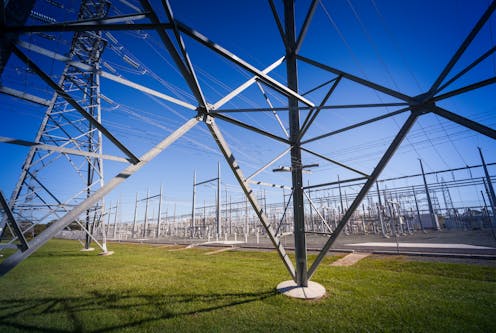Finally, good news for power bills: energy regulator promises small savings for most customers on the ‘default market offer’
- Written by Tony Wood, Program Director, Energy, Grattan Institute

Electricity customers in four Australian states can breathe a sigh of relief. After two years in a row of 20% price increases, power prices have finally stabilised. In many places they’re going down.
The good news is contained in two separate draft decisions today by the Australian Energy Regulator and Victoria’s Essential Services Commission, on the maximum price energy retailers can charge electricity consumers under a specific plan that must be offered to all consumers.
The price is officially known as the “default market offer”. It’s the price you’re charged on a “default” plan with an electricity retailer – in other words, the plan customers are on if they haven’t shopped around to find a better deal from competing retailers. The bottom line is, most of these residential electricity customers should receive price reductions of between 0.4% (A$13) and 7.1% ($211) next financial year. In most cases that’s less than the rate of inflation.
The relief is largely the result of a drop in wholesale prices – that’s the price paid to the generators producing electricity. Unfortunately, however, at the same time transmission and distribution prices – or network costs – have gone up. So the savings won’t be as great as they might have been.
A big improvement on previous years
This is the sixth year in which regulators have set default market offers for retail electricity customers. They do it where there is competition in the sector: so in southeast Queensland, New South Wales, South Australia and, separately, Victoria.
It does not include Tasmania, the ACT, Western Australia or the Northern Territory, where the relevant regulator sets the prices and there’s no or very little competition.
About 5-10% of consumers across the states involved are on default plans. The rest have a contract arrangement with a retailer. But the draft decision, if enacted, still directly affects hundreds of thousands of people. And as commentators have observed, it sends an important market signal about the general direction of electricity prices.
The Australian Energy Regulator says most residential customers on the default market offer can expect to save on their electricity bills in 2024-25. But the offers vary depending where you live.
Have a look at the table above to see what residential customers without “controlled load” can expect. That covers most households. (Controlled load is when you also have an off-peak tariff for hot water heating.)
Some customers will be paying more for electricity. In Southeast Queensland, residential customers will pay 2.7% more, which is an extra $53 on average.
Using an inflation forecast of 3.3%, the Australian Energy Regulator also calculates what they call the “real” year-to-year variation in prices. So even if there’s a small increase in the price for a particular area, it’s less than the rate of inflation. For that example in southeast Queensland, it equates to a decrease of 0.6% and a saving of $12 in real terms.
Residential customers on the Victorian default market offer can expect to save 6.4%. The retail power prices in Victoria are slightly better than in the other states largely because there are lower wholesale power prices.
All in all it’s a big improvement on the price hikes of last year and the year before that.
The final default market offer prices will be released in May, but we can expect little change.
Read more: The government will underwrite risky investments in renewables – here's why that's a good idea
Network prices are up
Regulators set the default market offer by itemising all costs retailers are likely to incur in the course of running their business. From that, they calculate the fair price retailers should offer customers on default plans.
Wholesale electricity costs, incurred when retailers buy electricity from generators on the wholesale market, make up maybe 30–40% of your bill.
The other major cost retailers face is for the electricity transmission and distribution network – that is, the “poles and wires”. These also comprise around 40% of your bill.
The network price is driven by inflation and interest rate rises, and also includes the costs of maintenance, and building new transmission infrastructure to connect renewable energy generators to the grid.
The easing of wholesale prices since their 2022 peak has been offset by increases in these network prices. In fact, network prices have increased by almost as much as wholesale prices have come down.
Read more: Wholesale power prices are falling fast – but consumers will have to wait for relief. Here's why
A difficult ask
Responding to the draft decision on Tuesday, Federal Energy Minister Chris Bowen said it showed the Albanese government was stabilising energy prices.
But Bowen came to office promising to cut power bills by $275 by 2025. That deadline is not very far away.
Bowen made that commitment in December 2021. Very soon after, electricity prices shot through the roof. It’s becoming very difficult to see how the $275 cost reduction will be achieved by next year.
The bottom line is prices have stabilised after a couple of bad years and hopefully the worst is behind us. But, it would be a brave person who attempts to predict where they go from here. There are too many moving parts. Governments should stay the course on policies, and consumers, worried about electricity prices, should go online, compare offers, and to find the best possible deal.
Authors: Tony Wood, Program Director, Energy, Grattan Institute





